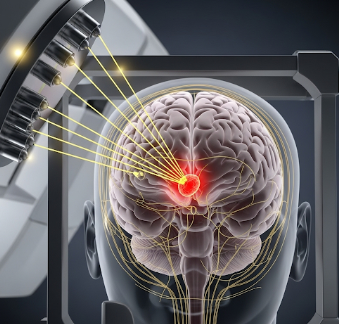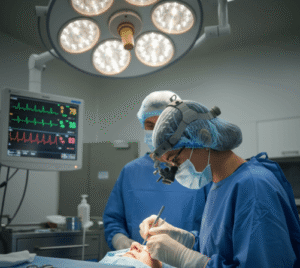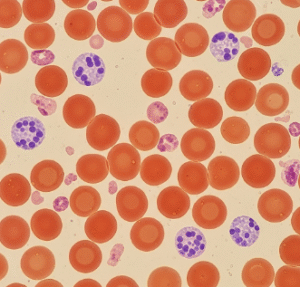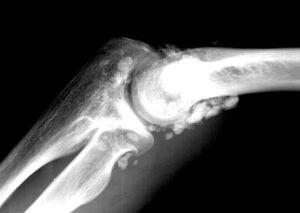Overview
Stereotactic Radiosurgery (SRS) is a highly advanced, non-invasive medical procedure that uses precisely targeted radiation beams to treat tumors, vascular abnormalities, and certain neurological conditions. Despite its name, SRS is not traditional surgery—no incisions or anesthesia are needed. Instead, powerful radiation doses are delivered to the exact area of concern while sparing nearby healthy tissue.
In Korea, SRS is widely available in cutting-edge hospitals and cancer centers, equipped with Gamma Knife, CyberKnife, and Linear Accelerator (LINAC)-based systems. Korean specialists are internationally recognized for their expertise, making the country a top choice for patients seeking precision treatment with minimal side effects and faster recovery.
What is Stereotactic Radiosurgery?
Stereotactic Radiosurgery is a specialized form of radiation therapy that:
- ✦ Delivers focused, high-dose radiation to a targeted area.
- ➤ Uses advanced imaging (MRI, CT, PET scans) for precise mapping.
- ✦ Minimizes radiation exposure to surrounding healthy tissue.
- ➤ Can treat conditions in the brain, spine, lungs, liver, and other organs.
Unlike conventional radiation therapy, which is spread out over multiple sessions, SRS is often completed in one session or a few sessions (stereotactic body radiotherapy – SBRT).
What are the Benefits?
Patients undergoing SRS in Korea experience numerous advantages:
✅ Non-invasive – no surgical cuts, stitches, or hospitalization.
➤ Outpatient procedure – usually return home the same day.
✦ High precision – protects surrounding healthy tissues.
➤ Quick recovery – minimal downtime compared to open surgery.
✅ Effective for inoperable tumors or patients unfit for surgery.
✦ Wide range of applications – brain tumors, metastases, AVMs, trigeminal neuralgia, prostate cancer, and more.
Procedure Details
1) How should I prepare for Stereotactic Radiosurgery?
Preparation may include:
- ✦ Diagnostic imaging (MRI, CT, angiography) to locate and map the target area.
- ➤ Medical history review and blood tests.
- ✦ Head frame or mask fitting (for brain SRS) to keep the head stable.
- ➤ Fasting for several hours before the procedure.
- ✦ Medication adjustments – your doctor may pause blood thinners or prescribe anti-seizure medicine.
- ➤ Discussion with your care team about risks, outcomes, and aftercare.
2) What happens during the procedure Stereotactic Radiosurgery?
The process generally takes 30 minutes to 2 hours depending on the treatment area:
➤ Step 1: The patient is positioned on a treatment table with either a rigid head frame or a thermoplastic mask (for brain/spine cases).
✦ Step 2: Imaging scans are performed to guide the treatment plan.
➤ Step 3: A computer system calculates precise radiation delivery.
✦ Step 4: The machine (Gamma Knife, CyberKnife, or LINAC) delivers high-dose radiation beams to the target.
➤ Step 5: Once completed, the patient is observed briefly before discharge.
Patients remain awake throughout the procedure, and no pain is felt from the radiation.
3) What happens after a Stereotactic Radiosurgery?
Post-procedure expectations include:
- ✦ Patients usually go home the same day.
- ➤ Mild headache, nausea, or fatigue may occur temporarily.
- ✦ Return to daily activities within 1–2 days.
- ➤ Follow-up imaging scans (MRI/CT) after weeks or months to assess treatment response.
- ✦ Some patients require additional sessions for larger or complex tumors.
- ➤ Long-term monitoring for any late side effects.
Risks / Benefits
Potential Risks:
- ✦ Temporary swelling or inflammation at the treated site.
- ➤ Fatigue, headache, or mild nausea.
- ✦ Rare neurological side effects (seizures, memory issues, weakness).
- ➤ Radiation necrosis (delayed tissue damage in rare cases).
Major Benefits:
- ✅ No surgical incision or hospital stay.
- ✅ High success rate for shrinking or controlling tumors.
- ✅ Option for patients unfit for traditional surgery.
- ✅ Safe, repeatable procedure when needed.
Recovery and Outlook
Recovery after SRS is typically quick and smooth:
- ✦ Return to work or school in 1–2 days.
- ➤ Follow-up scans every 3–6 months to track progress.
- ✦ Tumor shrinkage or stabilization often seen within months.
- ➤ Patients with neurological conditions often see symptom improvement.
- ✦ Long-term outlook is excellent with proper monitoring and supportive care.
When To Call the Doctor
After SRS, contact your healthcare provider if you experience:
⚠ Persistent or severe headache.
⚠ New neurological symptoms (weakness, confusion, seizures).
⚠ Severe nausea or vomiting.
⚠ Signs of infection (fever, chills).
⚠ Difficulty speaking, vision changes, or balance problems.
Best Korea Option / Process
Korea is one of the world leaders in SRS technology and expertise:
- ✦ Equipped with Gamma Knife Icon, CyberKnife, and advanced LINAC systems.
- ➤ Experienced neurosurgeons, oncologists, and radiation specialists.
- ✦ Multidisciplinary approach combining neurology, oncology, and radiology.
- ➤ Cost-effective treatment compared to Western countries.
- ✦ English-speaking medical coordinators for international patients.
- ➤ Excellent post-treatment follow-up and rehabilitation services.
Highlights of Stereotactic Radiosurgery in Korea
- ✅ Advanced non-invasive treatment for tumors and neurological disorders.
- ➤ No hospital stay required—outpatient procedure.
- ✦ High precision with minimal damage to healthy tissue.
- ➤ Quick recovery with excellent long-term results.
- ✅ Korea offers world-class technology at affordable costs.













